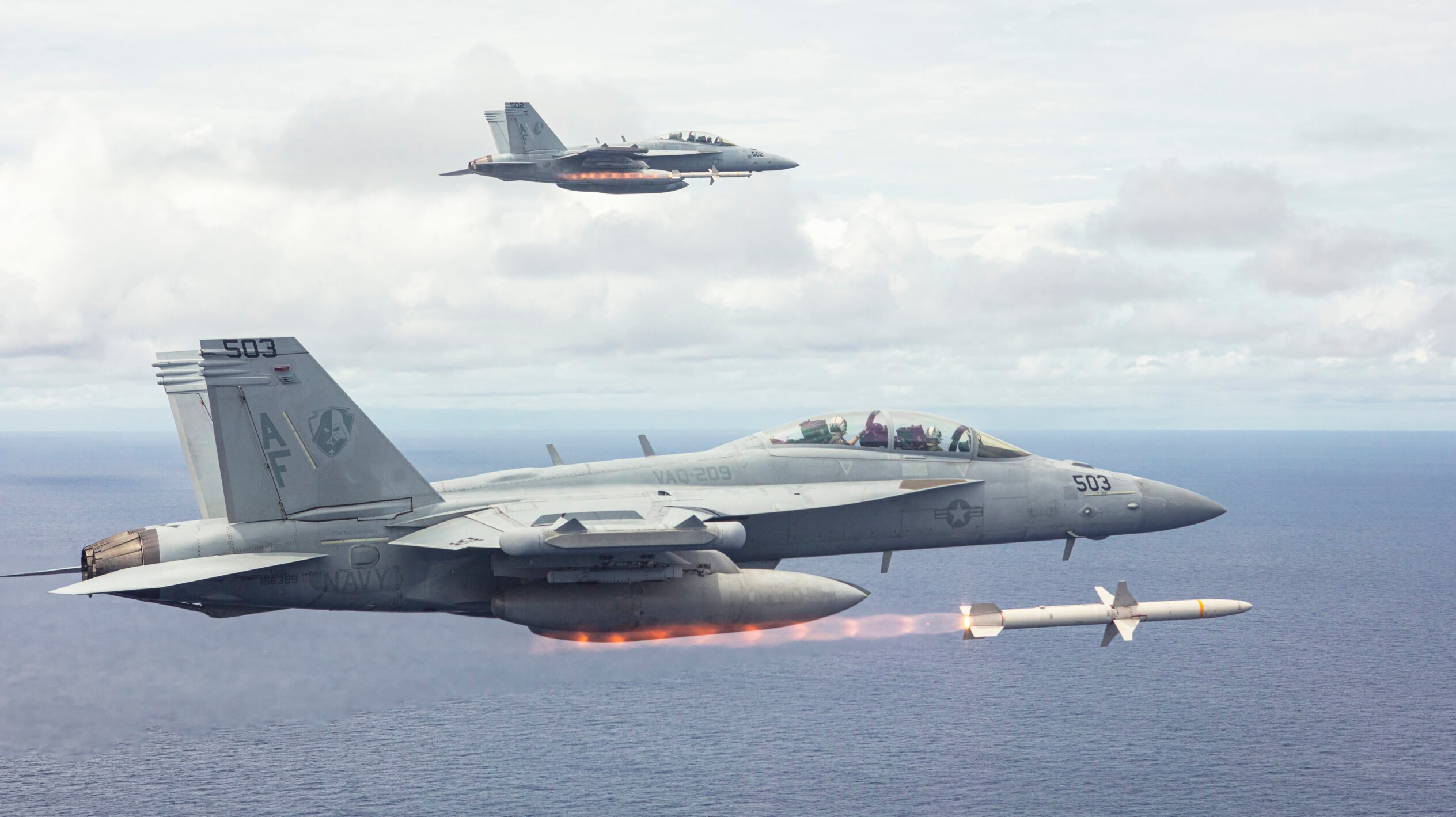
EA-18G Growlers from the “Star Warriors” of Electronic Attack Squadron (VAQ) 209 simultaneously fire two AGM-88 High Speed Anti-Radiation Missiles (HARM) during a training exercise near Guam. (US Navy photo by Cmdr. Peter Scheu)
WASHINGTON — The US State Department has approved a potential Foreign Military Sale to Australia of Advanced Anti-Radiation Guided Missiles-Extended Range (AARGM-ERs), with a estimated price tag of $506 million.
Sales announcements are not final; Foreign Military Sales (FMS) cases announced like these have been approved by the executive branch, and now Congress must weigh in or do nothing. Should the Hill not object — an almost unfathomable situation, given relations with Australia — the quantities and dollar values in the deals can change during negotiations with industry.
The AARGM-ER is a medium-range air-to-ground missile, employed for the suppression or destruction of enemy air defense systems. According to the Pentagon, the weapon is compatible with the F/A-18C/D, FA-18E/F, EA-18G, Tornado IDS/ECR, F-16 C/J and the F-35 joint strike fighter — the latter of which is set to be the core of Australia’s military aviation fleet for years to come.
Australia is seeking to buy up to 63 AARGM-ERs and up to 20 AARGM-ER Captive Air Training Missiles (CATMs). Also included, per the announcement, are “Dummy Air Training Missiles (AARGM-ER DATMs), containers, component parts and support equipment; Repair of Repairables; software (Classified and Unclassified); publications (Classified and Unclassified); training (Classified and Unclassified); transportation; U.S. Government and Contractor engineering support; and other related elements of logistical and program support.”
This would be the second batch of AARGM-ERs approved by State for the Lucky Country in the last year. In June 2022, DSCA announced a $94 million agreement for 15 of the weapons.
Per the DSCA, “The proposed sale will improve Australia’s capability to meet current and future threats by suppressing and destroying land- or sea-based radar emitters associated with enemy air defenses. This capability denies the adversary the use of its air defense systems, thereby improving the survivability of Australia’s tactical aircraft.”






















